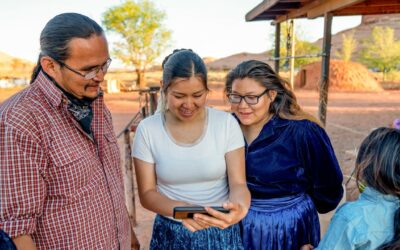How to Arrange Digital Communication Channels Like a Symphony
Want to drive digital transformation across your organization’s communication channels? Prioritize digital orchestration.
Digital transformation is a key driver for today’s organizations due to the way it simplifies communication and streamlines processes. SMS, text messages, and other digital channels make it easy to send timely, relevant, and accurate notifications to internal and external audiences, often automatically without staff intervention. The result: An organization — regardless of size or industry — can use digital channels to keep in contact with internal and external audiences like never before.
The benefits of digitally transforming your communications can be substantial. Yet, you may be missing out on a golden opportunity to reap the full benefits of digital transformation if you fail to use data to continuously learn about your target audience and find ways to improve your communications with them.
What is digital orchestration, and why is it important?
Digital orchestration represents the next step in your organization’s digital transformation. By orchestrating all of your communication touchpoints, you can leverage data to ensure the right audience members receive the right messages at the right time, every time. That way, you get the most value out of your digital communications and ensure your messages hit the mark with the audience.
To utilize digital orchestration, consider how your target audience engages with your organization. SMS is quickly becoming the preferred communication method for global audiences, with an average open rate around 98% and an average response time of 90 seconds. Meanwhile, organizations in healthcare, government, and other sectors are rapidly embracing SMS — and the longer your organization holds off on using SMS as a full communication channel, the more likely it becomes that you will fall behind the competition.
If your organization leverages SMS, it can gather data every time it sends a message to internal and external audiences, too. Over time, you can use this data to learn which messages hit the mark with your audience and update your communication strategy accordingly.
5 tips to arrange your communication channels like a symphony
To maximize your digital communications, you need to adopt a symphony conductor’s mindset. Arrange your communication channels in the same way a conductor takes a collection of musicians and ensures they work together to produce beautiful music. If you want your digital communications to flow in perfect harmony with one another, you should:
-
1. Scale your communications
Determine which digital communication channels you want to use and how to monitor their effectiveness. Establish metrics, leverage key performance indicators (KPIs), and create reports to retrieve digital communication insights. It often helps to conduct surveys and request feedback from your target audience via SMS, so audience members provide a steady flow of data.
As you build out your digital communications, track your results and identify any strengths and weaknesses. Implement changes to your strategy as needed. With this approach, you can find ways to orchestrate your communications to align with the audience’s expectations.
-
2. Deliver a wide range of content
Use your digital communications to engage, inspire, and motivate your target audience. Incorporate a variety of content. This allows you to stay connected to your audience and show them your organization is an industry leader.
Keep your communications as relevant as possible. This drives engagement and further differentiates your organization from industry rivals by positioning you as a trustworthy source. In addition, track engagement to the individual level to help orchestrate a communication strategy that ensures audience members get the messages they want when they want them.
-
3. Keep your communications simple
Resist the urge to bombard your network with long messages. Instead, keep each message short and simple, and ensure it is tailored to that audience segment. This helps reduce the risk of a miscommunication that could alienate audience members.
Consider your audience’s perspective every time you craft digital communications and orchestrate touchpoints across multiple channels to keep the audience engaged.
-
4. Build workflows
Implement digital communications workflows, so you can automate interactions with your target audience. With digital communications workflows, you can seamlessly connect to your audience, without having to worry about significant time or resource investment.
For example, you can establish workflows to remind your audience of upcoming events, deadlines, and important changes. Or you can leverage workflows to send donation and appointment reminders. Regardless of which workflows you use, they can be integrated into your digital orchestration strategy and help streamline the overall communication flow.
-
5. Be proactive
Experiment with your digital orchestration strategy. Remember, there is always room for improvement. If you try new communication channels or share different types of notifications, you may uncover new ways to foster long-lasting partnerships with members.
Creating a successful digital orchestration strategy is an ongoing endeavor. If you remain committed to improving it, you can consistently enhance this strategy and use it to optimize your digital transformation.
By putting together a digital orchestration strategy, your organization can take another step toward digital transformation. If you are ready to start building your digital orchestration strategy, Mobilize can help you initiate and execute the plan.
Mobilize is dedicated to making your digital communications more effective and efficient. We provide custom SMS messaging solutions, SMS plans with advanced features, and more custom solutions developed around your organization’s needs. To learn more about how we can help your digital transformation and orchestration strategy, please contact us today.



